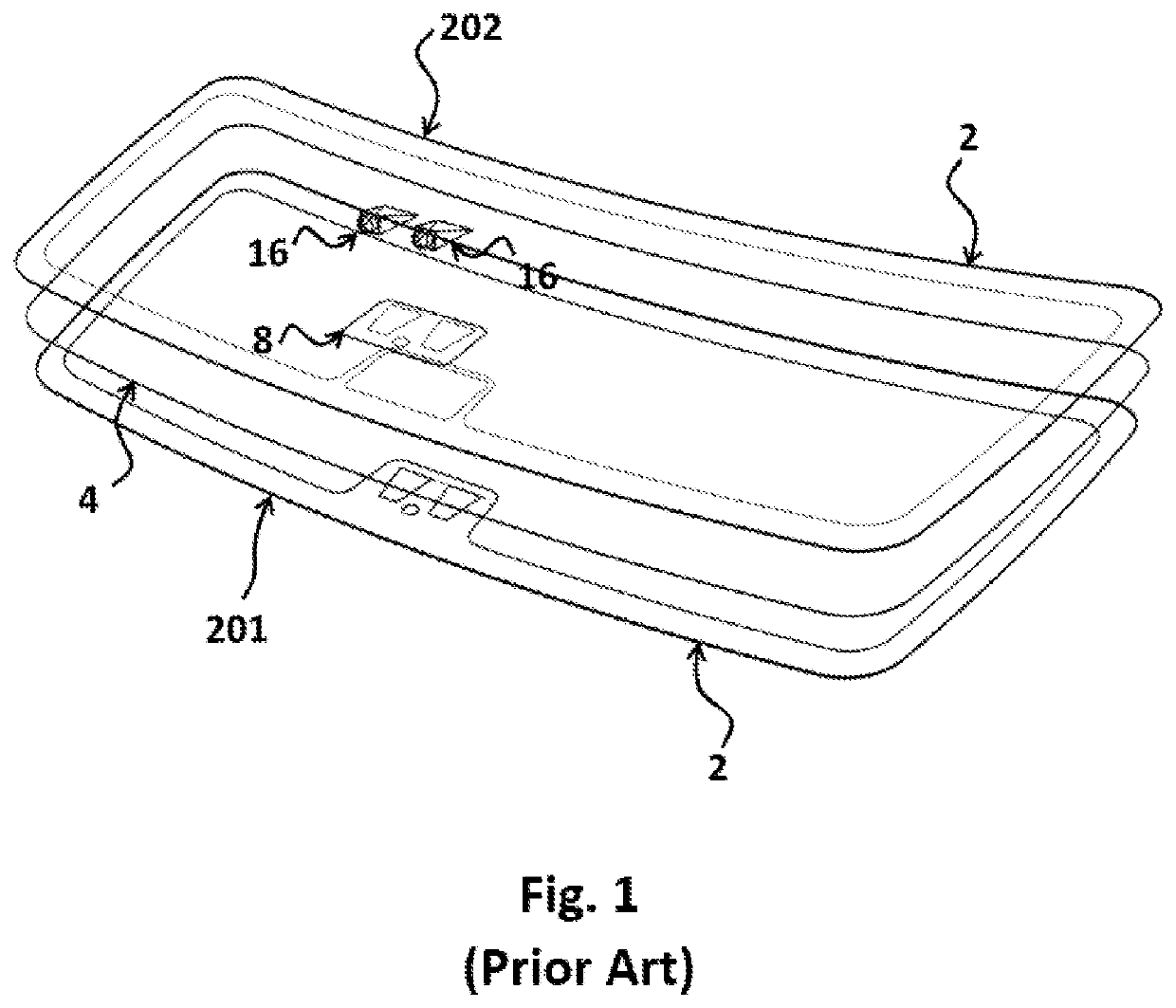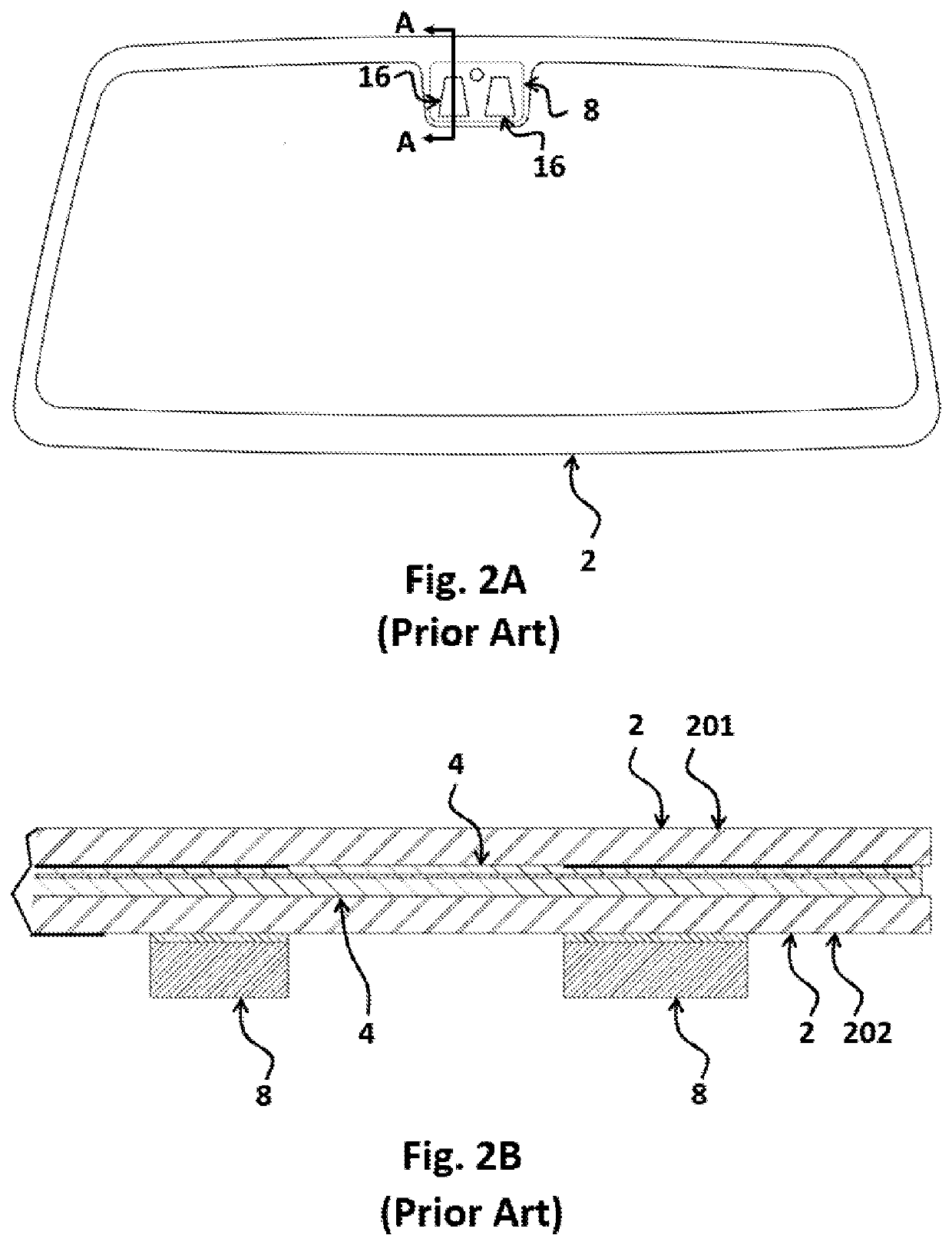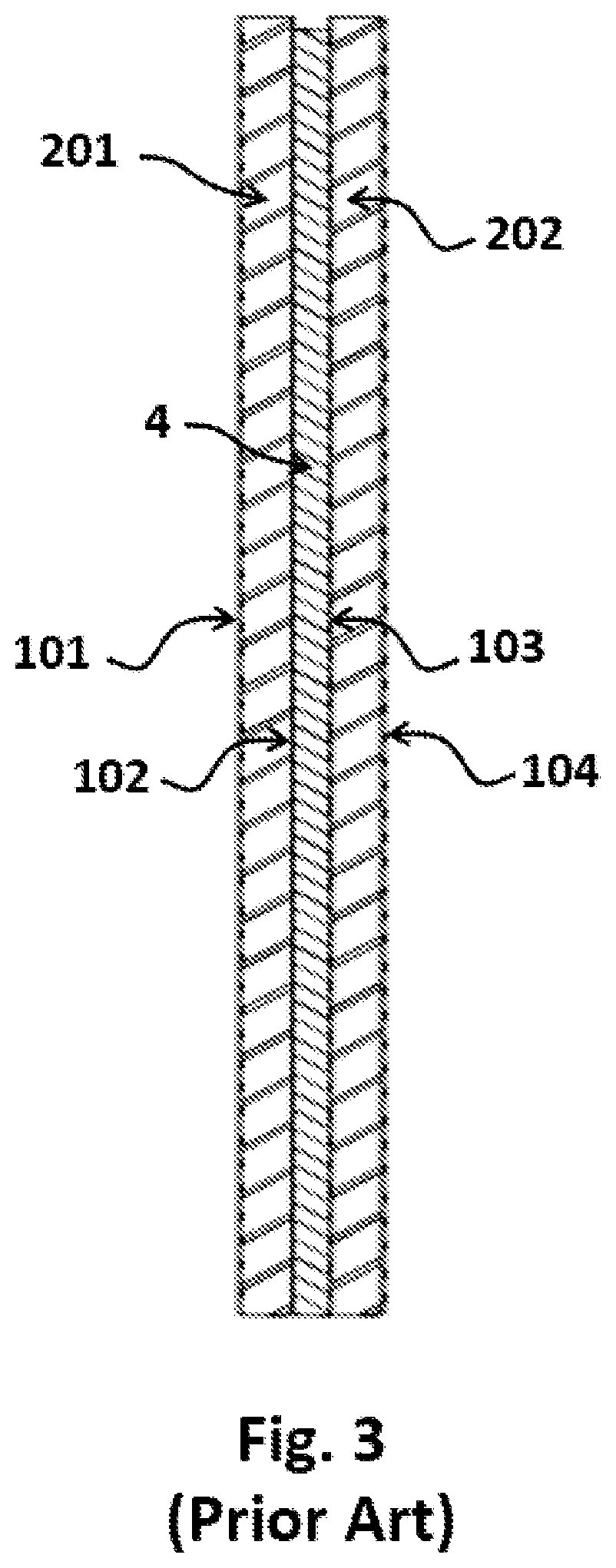Automotive laminate with superior camera window
a technology of laminated glass and superiority, applied in the direction of layered products, transportation and packaging, chemical instruments and processes, etc., can solve the problems of annealed glass breaking into large shards with sharp edges, affecting the optical performance of laminated construction, so as to improve the strength and improve the strength of laminated
- Summary
- Abstract
- Description
- Claims
- Application Information
AI Technical Summary
Benefits of technology
Problems solved by technology
Method used
Image
Examples
Embodiment Construction
[0062]In the drawings and discussion, the following terminology is used to describe the configuration of a laminated glazing. A typical automotive laminate, as shown in FIG. 3, is comprised of two layers of glass, the exterior or outer 201 and interior or inner 202 that are permanently bonded together by a plastic layer 4 (interlayer). The glass surface that is on the exterior of the vehicle is referred to as surface one 101 or the number one surface. The opposite face of the exterior glass layer 201 is surface two 102 or the number two surface. The glass surface that is on the interior of the vehicle is referred to as surface four 104 or the number four surface. The opposite face of the interior layer of glass 202 is surface three 103 or the number three surface. Surfaces two 102 and three 103 are bonded together by the plastic layer 4.
[0063]The plastic bonding layer 4 has the primary function of bonding the major faces of adjacent layers to each other. The material selected is typ...
PUM
| Property | Measurement | Unit |
|---|---|---|
| thicknesses | aaaaa | aaaaa |
| thicknesses | aaaaa | aaaaa |
| radius | aaaaa | aaaaa |
Abstract
Description
Claims
Application Information
 Login to View More
Login to View More - R&D
- Intellectual Property
- Life Sciences
- Materials
- Tech Scout
- Unparalleled Data Quality
- Higher Quality Content
- 60% Fewer Hallucinations
Browse by: Latest US Patents, China's latest patents, Technical Efficacy Thesaurus, Application Domain, Technology Topic, Popular Technical Reports.
© 2025 PatSnap. All rights reserved.Legal|Privacy policy|Modern Slavery Act Transparency Statement|Sitemap|About US| Contact US: help@patsnap.com



